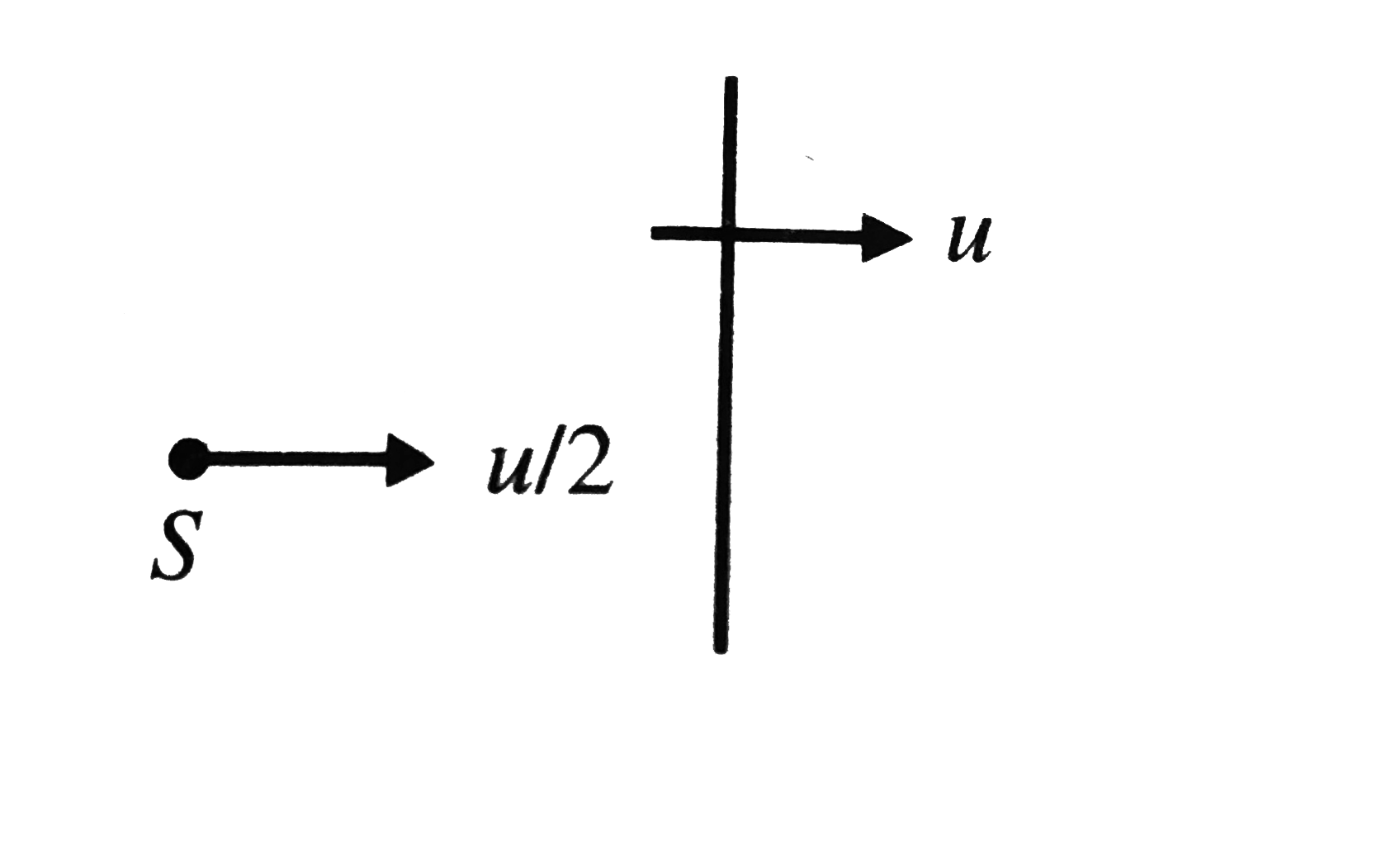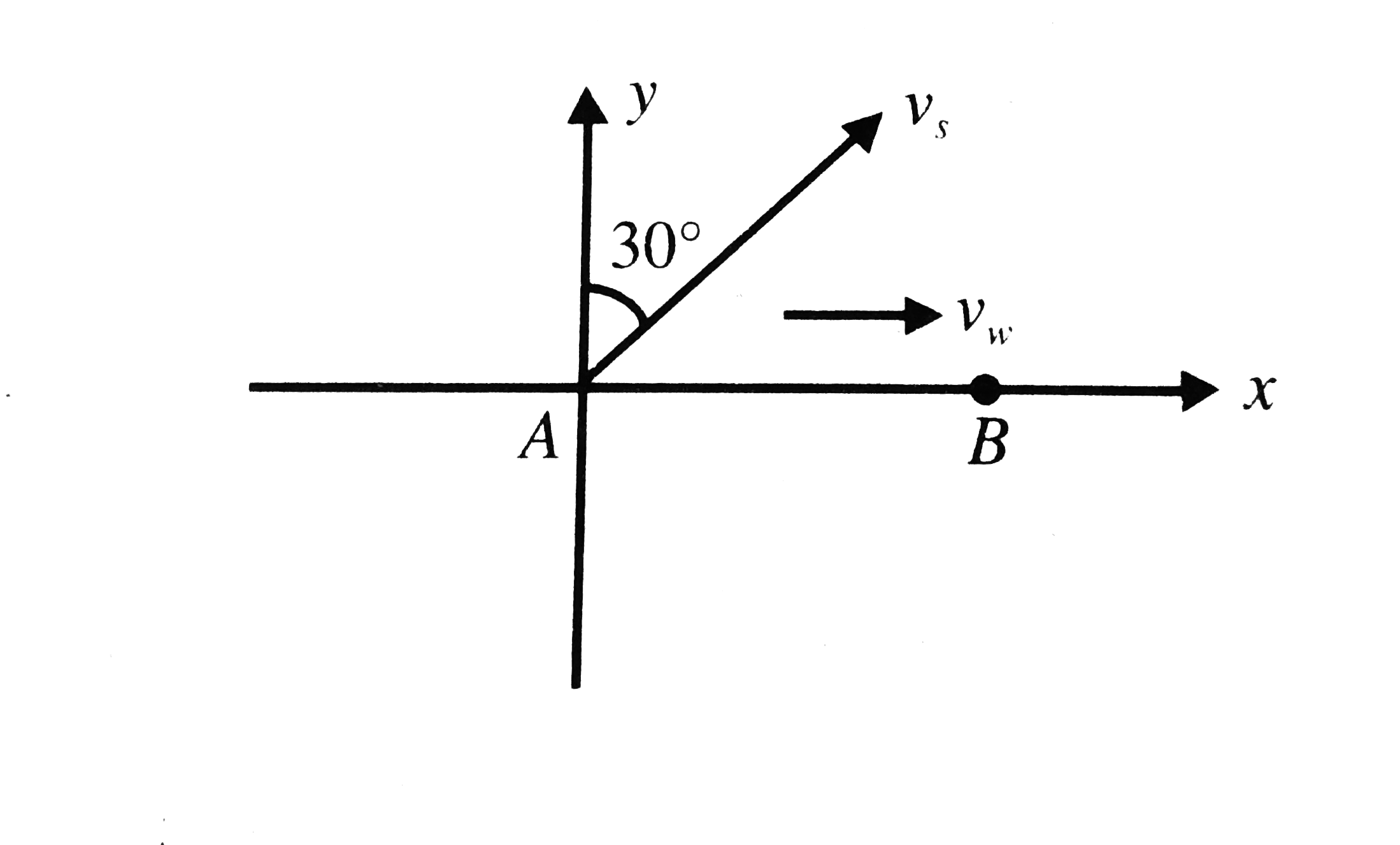When the source moves with a velocity v, the ratio of wavelengths received by A and B will be (c = speed of Sound):

The correct Answer is:A
Step by step video & image solution for When the source moves with a velocity v, the ratio of wavelengths received by A and B will be (c = speed of Sound): by Physics experts to help you in doubts & scoring excellent marks in Class 12 exams.
Topper's Solved these Questions
- BOOK - AAKASH SERIESCHAPTER - WAVE MOTIONEXERCISE - LECTURE SHEET (EXERCISE-VI (LEVEL-II(ADVANCED) MORE THAN ONE CORRECT ANSWER TYPE QUESTIONS))4videos
WAVE MOTION
- BOOK - AAKASH SERIESCHAPTER - WAVE MOTIONEXERCISE - LECTURE SHEET (EXERCISE-VI (LEVEL-II(ADVANCED) LINKED COMPREHENSION TYPE QUESTIONS))8videos
WAVE MOTION
- BOOK - AAKASH SERIESCHAPTER - WAVE MOTIONEXERCISE - LECTURE SHEET (EXERCISE-VI (LEVEL-I(MAIN) STRAIGHT OBJECTIVE TYPE QUESTIONS))11videos
WAVE MOTION
- BOOK - AAKASH SERIESCHAPTER - UNITS AND MEASUREMENTSEXERCISE - EXERCISE -366videos
UNITS AND MEASUREMENTS
- BOOK - AAKASH SERIESCHAPTER - WAVE MOTION AND SOUNDEXERCISE - PROBLEMS (LEVEL - II)97videos
WAVE MOTION AND SOUND
Similar Questions
When source of sound moves towards a stationary observer, the wavelength of sound received by him
View Solution
A wall is moving with velocity u and a source of sound moves with velocity u2 in the same direction as shown in the figure. Assuming that the sound travels with velocity 10u, the ratio of incident sound wavelength on the wall to the reflected sound wavelength by the wall is equal toView SolutionWhen the observer moves towards the stationary source with velocity, v1, the apparent frequency of emitted note is f1. When the observer moves away from the source with velocity v1, the apparent frequency is f2. If v is the velocity of sound in air and f1f2 = 2,then vv1 = ?
View SolutionAn observer is approaching with a speed v , towards a stationary source emitting sound waves of wavelength λ0 . The wavelength shift detected by the observer is ( Take c= speed of sound )
View SolutionA car moving with a velocity v1 overtakes a person moving with a velocity v2 . The ratio of frequencies of sound Just before and after overtaking, is:
 View Solution
View SolutionThe frequency of sound produced by a bell is 500 Hz the velocity of the source relative to still air is 60 m/s. An observer moves at 30 m/s along the same line as the source. Calculate the frequency of sound wave measured by the observer. Consider all possible cases (speed of sound v=340ms.)
View SolutionThe frequency of sound produced by a bell is 500 Hz the velocity of the source relative to still air is 60 m/s. An observer moves at 30 m/s along the same line as the source. Calculate the frequency of sound wave measured by the observer. Consider all possible cases (speed of sound v=340ms.)
View Solution
In the figure shown, a source of sound of frequency 510 Hz moves with constant velocity vS=20ms in the direction shown. The wind is blowing at a constant velocity vW=20ms towards an observer who is at rest at point B. corresponding to the sound emitted by the source at initial position A, the frequency detected by the observer is equal to (speed of sound relative to air is 330ms)View Solution
In the figure shown, a source of sound of frequency 510 Hz moves with constant velocity vS=20ms in the direction shown. The wind is blowing at a constant velocity vW=20ms towards an observer who is at rest at point B. corresponding to the sound emitted by the source at initial position A, the frequency detected by the observer is equal to (speed of sound relative to air is 330ms)View SolutionA curve is plotted to represenet the dependence of the ratio of the received frequency f to the frequency f0 emitted by the source on the ratio of the speed of obsever Vob to the speed of sound Vsound in a situation in which an observer is moving towards a stationary sound source. The curve is best represnted by :
View Solution

